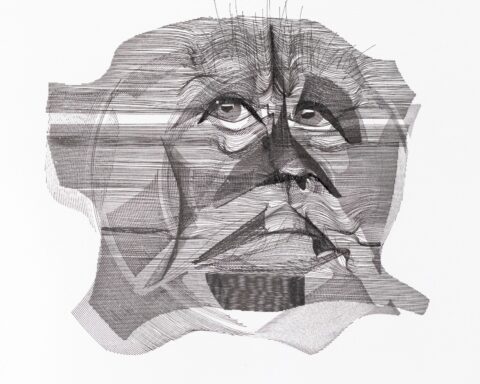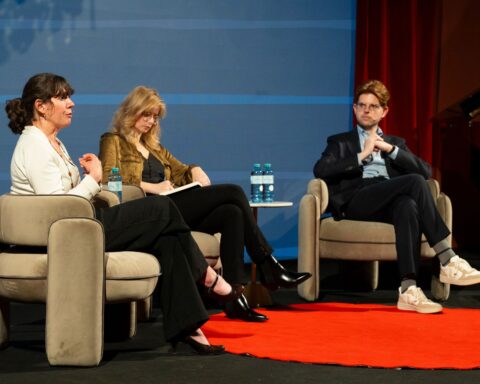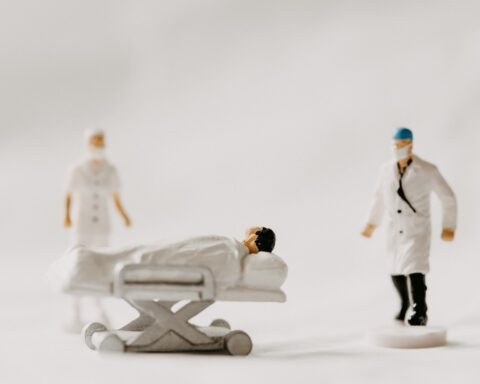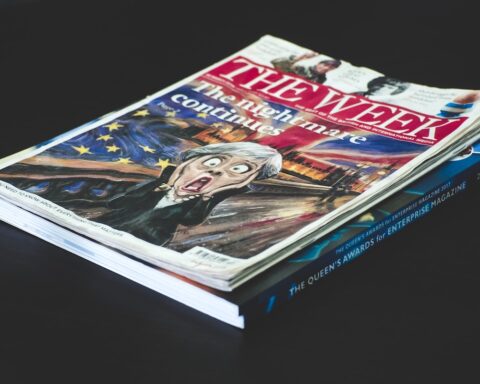Environmental issues are one of the biggest challenges mankind has to face in the 21st century. There is an urgent need to replace conventional processes in industries and our daily lives with greener alternatives. Synthetic biology may be one way in which we can achieve switching to these alternatives. Synthetic biology is about modifying living organisms in a way so they decompose what we need to get rid of or build something that we want to produce.
Modifying DNA in a laboratory to change its metabolic process into something useful is called reprogramming the microbe. An expert in these processes is Stephen Wallace, Associate Professor in Biotechnology at the University of Edinburgh. He earned his PhD at the University of Oxford in organic chemistry and holds a master’s degree in medicinal and biological chemistry from the University of Edinburgh.
At the 2022 TEDxVienna conference On the Rise, Stephen talked all about synthetic biology, using examples from projects he has been working on, and giving our audience further insight on what to expect in the future.
How was your experience of giving a TEDx talk and how has the event been so far for you today?
It was really amazing and I have to point out the powerful positive atmosphere here. It has been quite overwhelming in a really good way. It was certainly everything I hoped it would be and more.
You were talking about modifying microbes to serve a certain purpose with emphasis on your work with bacteria. Are you also using other types of microbes like algae, fungi, or viruses?
We do most of our work in bacteria, but the field of synthetic biology as a whole uses other types of microbes, too. There are certain chemicals which are more suited to certain types of organisms, and bacteria fit best for our purposes, so we work with them.
How can we imagine the process of reprogramming bacteria? Is this more of a theoretical or practical task?
The chemistry inside of microorganisms is very complex. At this point it is not possible to fully model and simulate what is actually going to happen when you change their genetics or insert new foreign DNA. Of course, we collect more data and experience with every modification, but to a certain degree it is a trial-and-error approach. Therefore, we are very fortunate to work directly with the Edinburgh Genome Foundry, which is one of the world’s most advanced fully automated DNA assembly platforms. This allows us to create these so-called “genetic constructs” very quickly and in huge numbers, which makes the mentioned trial-and-error process very efficient.
What role does the field of Bioinformatics play in this process?
It is really amazing and so useful for us. We are sequencing new microbes faster than we ever have before and that information is immediately available through the community. If I have a specific enzyme that I am interested in using in a bacterium, I can just take the sequence of that enzyme and align it with all known genomes for every microorganism within a minute. That is insanely powerful! Then we can get this DNA synthesized for a couple of pounds in a couple of days and work with it.
In your talk, you were describing how you produced nylon out of renewable materials. How economic is the aforementioned way of nylon production on a larger scale? What are the limits?
There is generally one limiting factor when producing new chemicals in bacteria. After a certain timespan, the product reaches a concentration above which it starts to interfere negatively with the microbes themselves. This means that the produced adipic acid, which is the main component in nylon, could reach a point where its concentration actually starts killing the producing bacteria.
Hence, the limit on how much we can produce is actually not about how much we can generate but about the threshold for the microbe above which it starts dying. There are various ways to work around that, for example, continuous fermentation where you actively switch in new microbes by taking out adipic acid as the end product. This could be imaginable for adipic acid but since it is remarkably not toxic to the bacteria, we didn’t even reach this threshold in our laboratory yet.
Since adipic acid is an acid, actively sequestering it with a base seems like an obvious approach, too. There are a lot of methods we can use and this is something we have to seriously take into account when we are going to commercialize our process on a larger scale.
What other substances are you currently researching?
We are also focused on the potential for plastic waste right now, which we haven’t really foreseen. The depolymerization of specifically PET plastic results in terephthalate acid, which is a central metabolite for bacteria and therefore has a lot of potential for biotechnology.
We are actually struggling to keep up with all the ideas of what we could synthesize with microbes, but the most exciting projects are about pharmaceuticals. I love the idea of taking something that is damaging the planet right now and turning it into something that could benefit human health.
Could you release bacteria into the ocean to transform plastic into something non-harmful?
The already mentioned terephthalate acid is also the central metabolite of the E. coli bacteria, which is completely harmless. We can modify E. coli so it becomes addicted to this type of plastic waste and dies without it. So theoretically releasing it into the ocean would be possible because it is going to metabolize as long as there is plastic and will die when there isn’t anymore. This is definitely quite ambitious and other factors have to be taken into account, but biochemically it is possible.
What about potentially dangerous interactions with the ecosystem that are very complex and can’t be foreseen?
These kinds of effects are definitely very difficult to predict, but there are honestly many more pathogenic and dangerous microorganisms in the sea already. We use E. coli which is all over you and me right now, and there is not much difference between these “industrial” microbes and everything else that lives in the environment right now. Especially because the microbes that we use are much safer than the ones we have in our guts for example.
Since this still is a hot topic in our field and becomes more important the closer we get to actual applications, there are some methods we can use to control the process. For example, the so-called safety switch that is programmed into the microbe so they can be killed or even eradicate themselves in a controlled way. Nevertheless, the long-term large-scale effects are something where geo-microbiologists have to take over.
What comes to your mind when you think of further applications for the future?
I see engineered microbiomes as something very interesting and promising. The current research shows that the microbes living inside us mainly dictate the way we are reacting to medication. It has been found that the effects of L-DOPA, which is a treatment for Parkinson’s disease, solely depend on whether you have certain bacteria in your gut or not. I think the idea of enhancing your microbiome with a specifically modified microbe to help you cure or manage disease is beautiful. Nevertheless, I would definitely still be hesitant to infuse artificially created bacteria into my body (laughs).
Other fields could be applications in food and drink, living materials in your home, or more sustainable building materials. Electricity is a phenomenon that is microbial in nature, so imagine going away from sustainable energy sources from your house to producing it yourself. You could generate it in a microbial process with your domestic waste for example. In general, the possibilities are incredible because waste is just carbon and bacteria feed on carbon. Our approach so far was just to burn it or bury it, but it holds unimaginable potential.
Is there any other news in your field on the rise which you haven’t already mentioned today?
In this field, we always have to ask ourselves, how scalable and productive the technology we use in real-life economy actually is and this year there was a breakthrough. There is a company called LanzaTech that commercialized the bioproduction of a platform chemical like the one we use in Edinburgh. They engineered an organism to use waste carbon dioxide from another industrial process as a feedstock to go into fermentation. After analyzing the benefits on a larger scale, after tons of produced carbon dioxide, the result was actually a negative carbon dioxide footprint. So not just the question about the scalability was answered positively in this project, it even benefited the environment. I think this is very inspiring and something worth mentioning

To learn more about Stephen’s work in Synthetic Biology, stay tuned for his full talk from TEDxVienna On the Rise, available on Youtube soon.
Interview by Tobias Goretzki. Images by Cherie Hansson.





